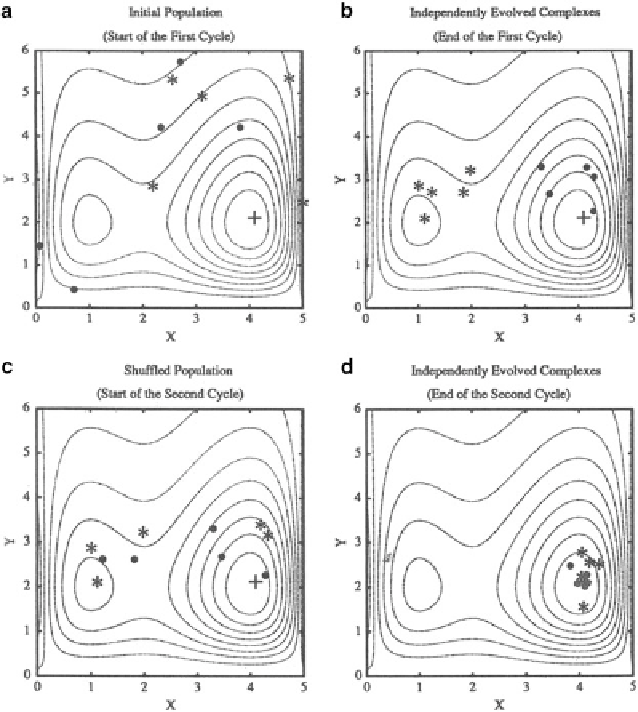Geoscience Reference
In-Depth Information
Fig. 17.5
Illustration of the SCE-UA method (Adopted from
Duan et al. 1994
)
In SCE-UA, the initial set of parameters (first step) is chosen randomly through-
out the feasible parameters space for p parameters to be optimized. Then the set is
partitioned to several “complexes” that have 2p C 1 points in which each complex
evolves independently using the simplex algorithm. The complexes are then shuffled
to form new complexes in order to share information between the complexes. SCE-
UA method is briefly illustrated in Fig.
17.5
. The processes of competitive evolution
and complex shuffling introduced in SCE-UA ensure that the information contained
in the sample is efficiently and thoroughly exploited. Overall, SCE-UA appears to
be capable of efficiently and effectively identifying the optimal values for the model
parameters (
Duan et al. 1992
). SCE-UA has been used widely in watershed model
calibration and other areas like soil erosion, subsurface hydrology, land surface
modelling (
Duan et al. 2003
).

Search WWH ::

Custom Search